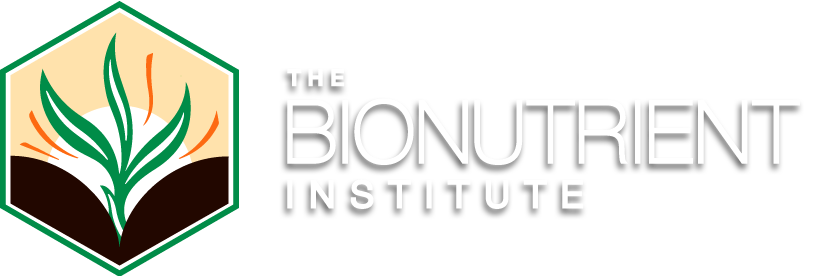
Our History
The work of the Bionutrient Institute started in 2016 when the core staff of the Bionutrient Food Association decided to proceed forward with developing an ability for Nutrient Density to become a driver in the marketplace. We understood that working with nature seemed to increase plant health, soil health, farm viability, crop flavor shelf life and marketability, and pest and disease resistance.
We decided to focus on three objectives:
Defining nutrient variation
Identifying causal factors
Developing instruments for assessment
At the Soil and Nutrition Conference that winter we presented the idea to our community and after receiving support in moving forward with this objective started the work.
Founder Dan Kittredge presenting in 2017
Our-Sci partner, Greg Austic presenting in 2017
We identified Greg Austic and Dan Teravest now of Our-Sci as partners who could help with the lab work, and instrument development, and Dorn Cox and Mike Stenta of farmOS who could help with the data collection framework. A generous donation from Sally Calhoun allowed us to engineer the first Bionutrient Meter which we then presented to our community at the next Soil and Nutrition Conference at the end of 2017. At that point, we also brought in Lisa Stokke of Next7 for strategy, communication and outreach.
This broader coalition we named the “Real Food Campaign” and proceeded in 2018 to establish our first lab in Ann Arbor Michigan and work to identify variation in nutrient levels in carrots and spinach across the supply chain in the US. In 2019 we set up another lab at Chico State in California and broadened the suite of crops assessed to include lettuce, tomatoes, grapes and kale. We also started working with growers to document the management practices and environmental conditions, and to send in the soil the crops grew in along with the crops.
In 2020 we set up a further lab in France with Eco-sens, broadened the number of crops sampled to 21, and processed enough samples to calibrate our first-generation Bionutrient Meter. Also with more than 150 grower partners from across the US and Europe we collected enough data to begin to show direct connections between soil health, management practices and nutrient density of crops.
Now in 2021, we have established a new engineering lab to improve upon the functionality of our Bionutrient Meter and to characterize a more complete metabolomic definition of Nutrient Density. As we go from grassroots proof of concept to the ability to actually define Nutrient Density and provide instruments to the marketplace, we are changing our name from the Real Food Campaign to the Bionutrient Institute. Our next steps will be to publish all of the work we have completed in peer reviewed literature to establish its scientific veracity in the formal community. Simultaneously, we are working to integrate animal products to our data sets, and to do it in a way that establishes market standards, not just nutrient variations.








